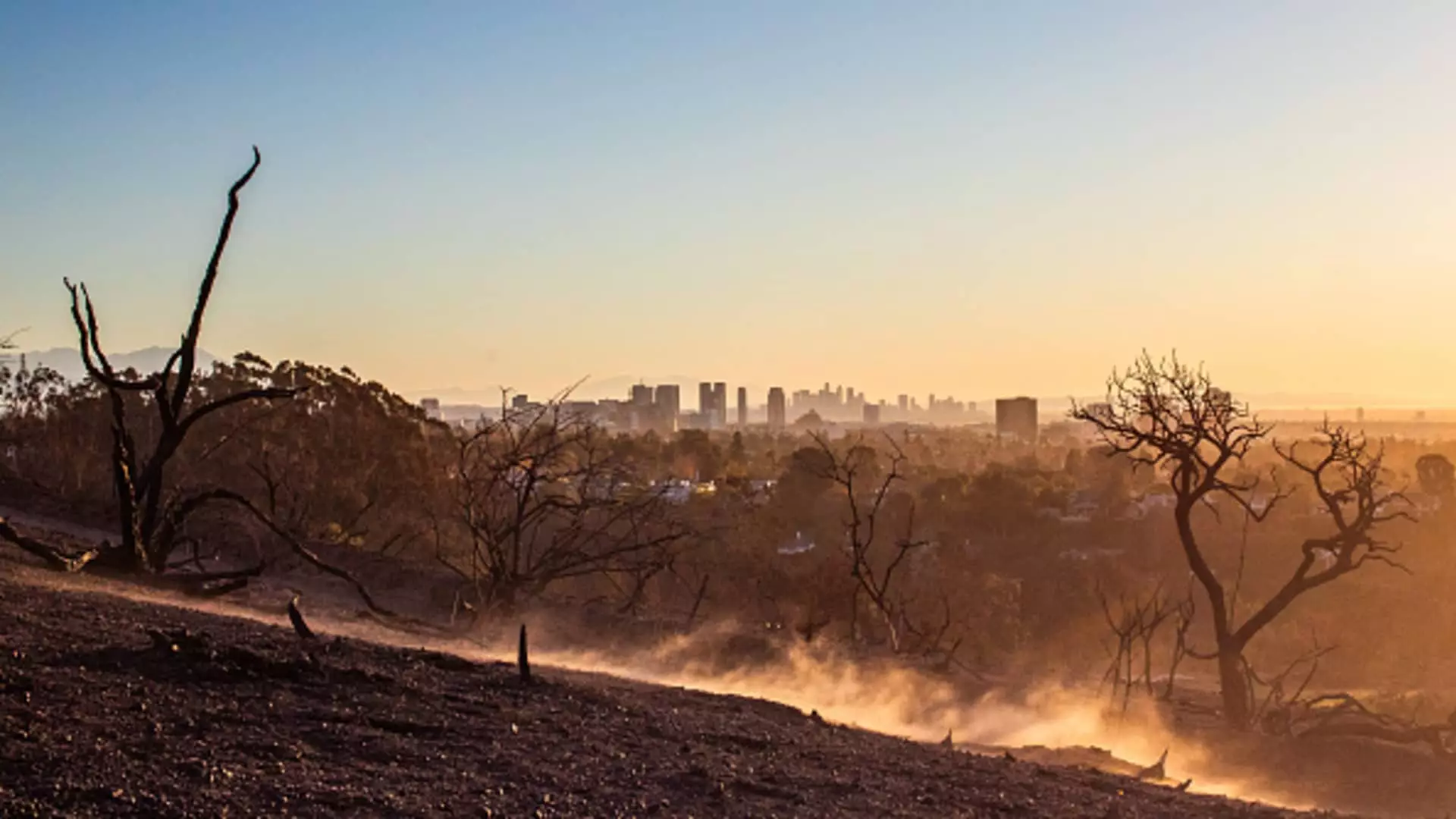In recent months, the combination of escalating wildfires and the overall increase in extreme weather events has marked a troubling trend for homeowners, particularly in vulnerable regions like California. The catastrophic wildfires near Los Angeles could, according to analysts, lead to insured losses exceeding $20 billion, potentially making them some of the most devastating in U.S. history. These losses are indicative of a broader problem in the insurance industry, where premiums have been rising long before the flames ignited this season.
Insurance firms, pressured by the spikes in natural catastrophes, are eyeing significant rate increases. Patrick Douville, a leading figure at Morningstar, emphasizes the necessity for insurance regulators to permit a risk-based pricing model that mirrors the real dangers posed to homeowners. This crisis of affordability not only threatens the budget of individual homeowners but also casts a shadow over property values, leaving many without adequate coverage. As California’s Department of Insurance has recently hinted at regulatory changes to facilitate higher rates in high-risk areas, homeowners could see rates increase as much as 34% in just a single year.
The increasing occurrence and intensity of natural disasters have created rippling effects throughout the insurance market. A report from the National Oceanic and Atmospheric Administration highlights that last year alone, there were 27 separate disasters costing $1 billion each in damages. This not only raises concerns about future disasters but also reinforces the rising saturation of natural risks across the United States. Alarmingly, nearly half of American homes now face severe threats from various environmental issues.
The costs associated with home insurance are rising in response. According to the S&P Global Market Intelligence data, insurance rates surged by 33.8% from 2018 to 2023, with an 11.3% hike recorded just in 2023. Homeowners are often caught in a whirlwind of rising premiums and limited options, a situation that is forcing many to grapple with questions of affordability and coverage adequacy in the face of mounting environmental challenges.
The intricate nature of insurance pricing makes it complicated to predict how current events will shape the market. Janet Ruiz of the Insurance Information Institute notes that while California homeowners are feeling the brunt of these hikes, such pricing is not uniformly applied nationwide. Each state has its own regulatory framework, preventing direct correlation of premiums in one state from adversely influencing another. Nevertheless, the underlying issue remains: when insurers are unable to raise rates in heavily regulated states, they often offset losses by increasing rates in regions with lesser regulations.
Economists from prestigious institutions have criticized this existing framework, raising flags about its sustainability. As they indicate, insurance companies operate across state lines, seeking to balance losses in one area by boosting profits in another. In the aftermath of natural catastrophes, the fear is that this pattern could extend to regions previously considered lower risk, resulting in a nationwide reevaluation of insurance costs.
In the foreboding context of elevated insurance costs and the potential for underinsurance, experts argue that homeowners should take a proactive approach to evaluating their coverage. Many are unaware of how dramatically rebuilding costs have increased, pushing those who renew their policies without adjusting coverage limits at risk. From $166 per square foot prior to the pandemic to an alarming $300 now, the financial implications are substantial.
Homeowners are encouraged to seek updated assessments from insurance professionals or local contractors to ascertain realistic rebuilding costs. This crucial step can prevent significant financial shortfalls in the event of a disaster. Moreover, as flooding remains one of the most overlooked aspects of insurance, it is critical for homeowners to invest in specialized flood insurance policies, recognizing that traditional homeowner policies typically do not cover flood-related damages.
Given the increasing prevalence of natural disasters and insurance rate hikes, homeowners must remain vigilant in managing their insurance needs. It’s prudent to review insurance policies annually, recalculating potential rebuilding costs and ensuring that coverage limits align with current market realities. Consulting a trustworthy contractor can provide a more accurate cost estimate, which can guide homeowners in securing appropriate coverage.
Additionally, homeowners should stay informed about regulatory developments in the insurance landscape, understanding how their local market may be impacted by nationwide trends. While the rising cost of insurance remains a concerning trend, proactive measures can empower homeowners, ensuring that they are not left vulnerable amidst a landscape fraught with uncertainty.
As we navigate this new era of climate risks and insurance challenges, one thing is clear: both preparedness and informed decision-making will be essential in mitigating the impacts of increasingly costly natural disasters.

